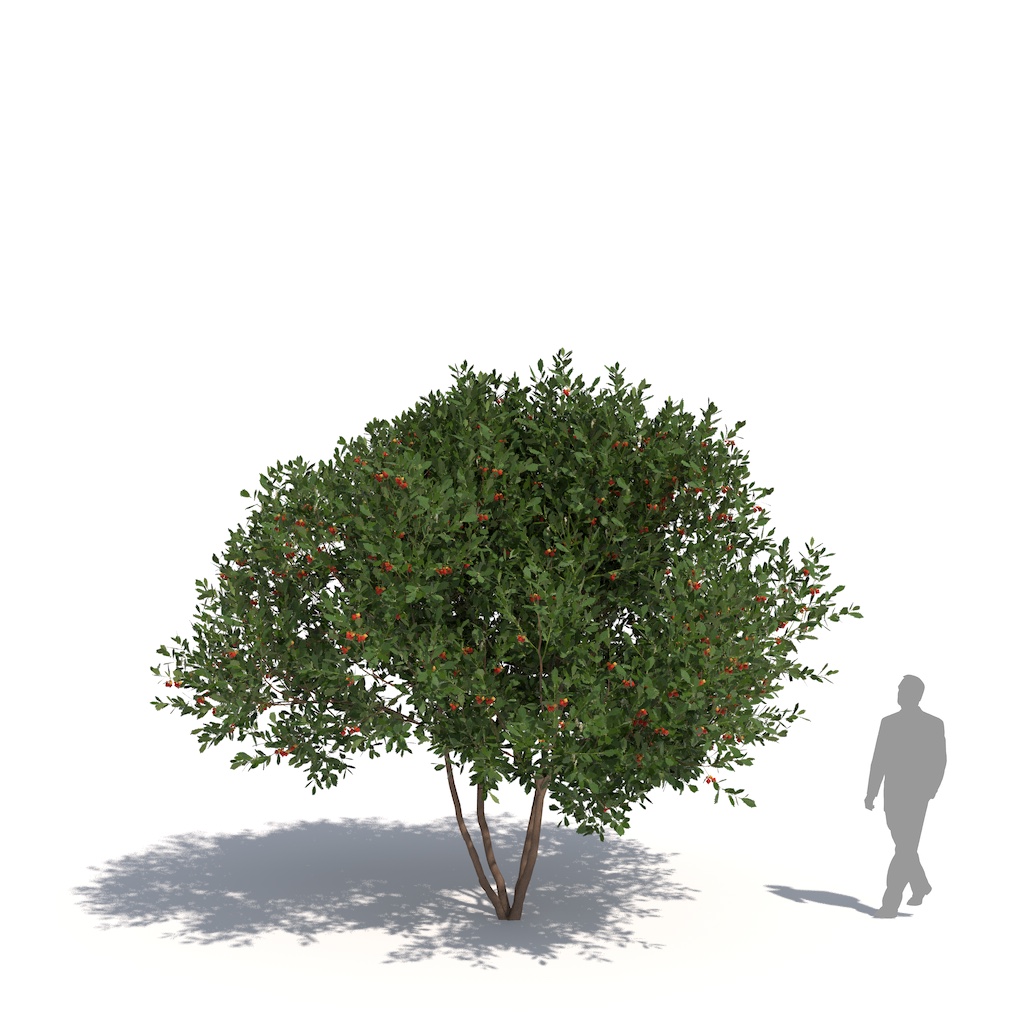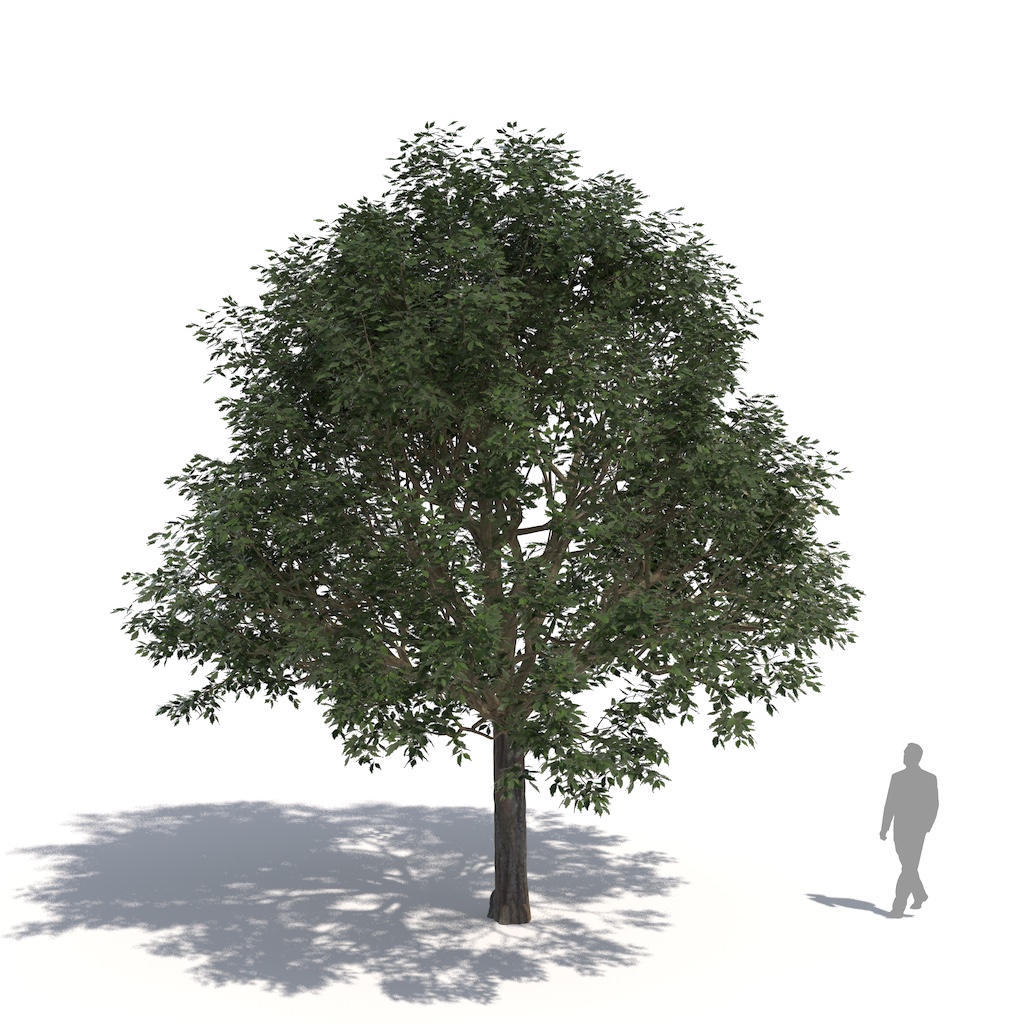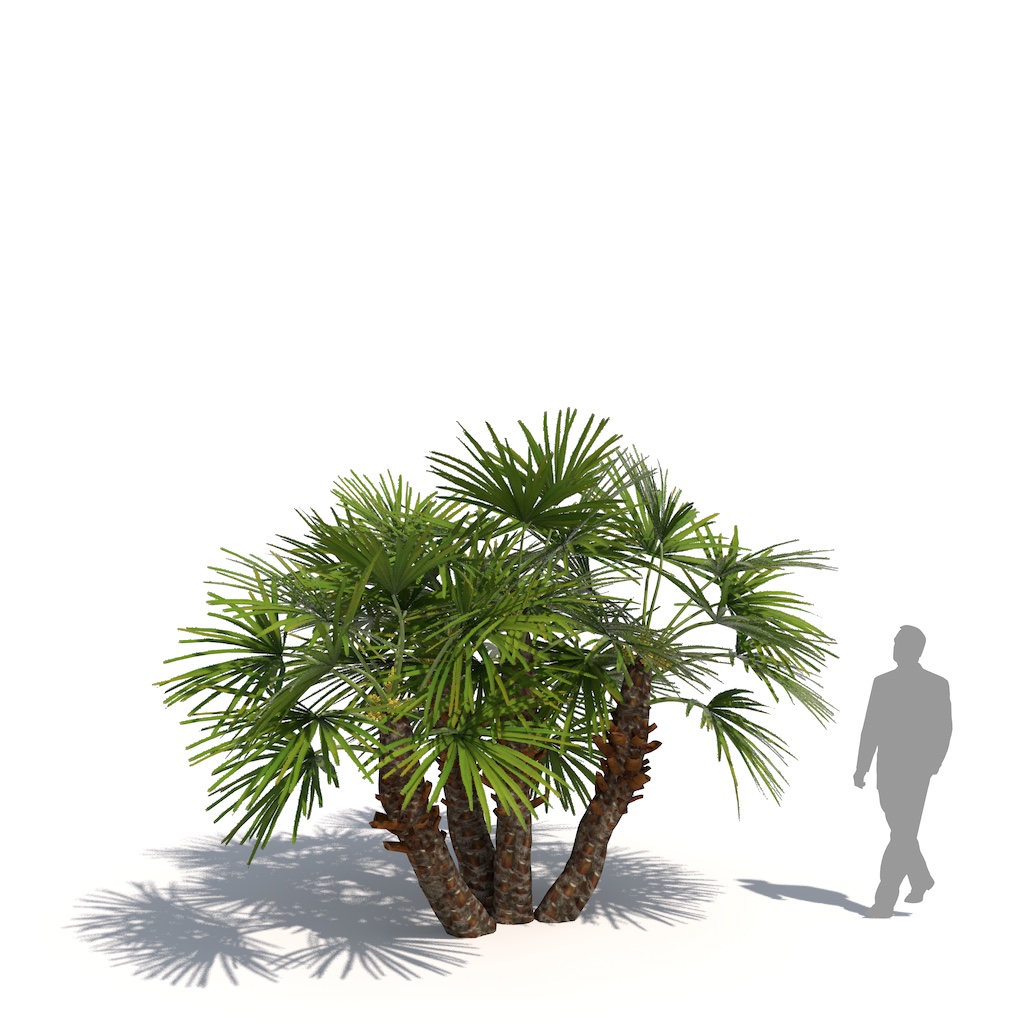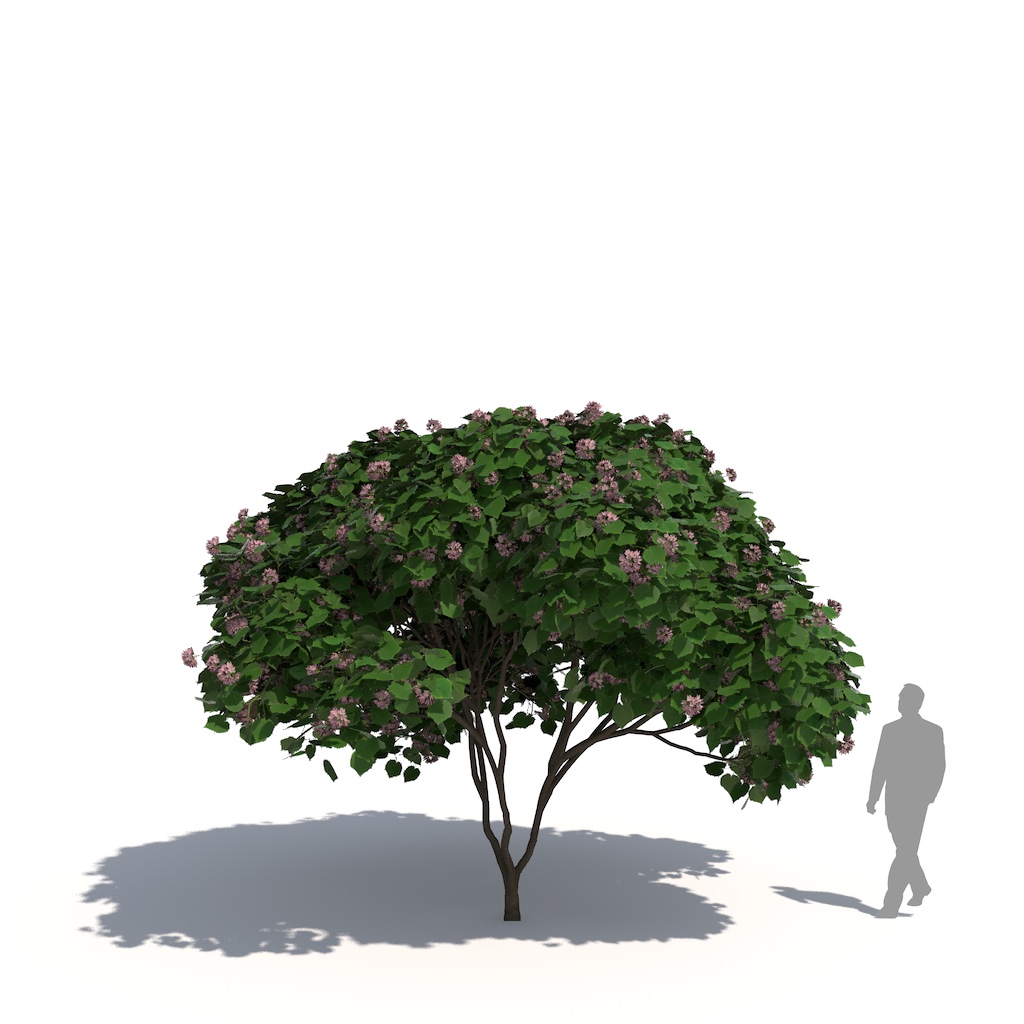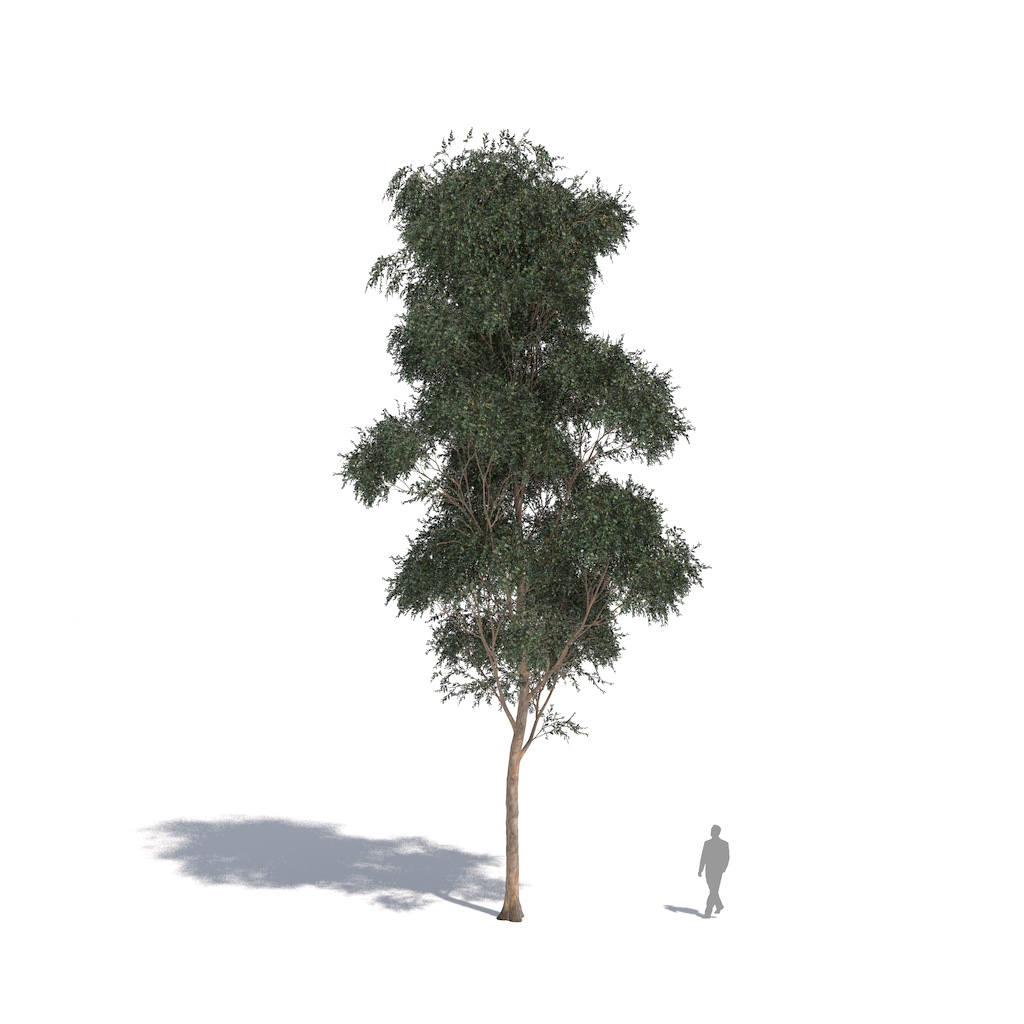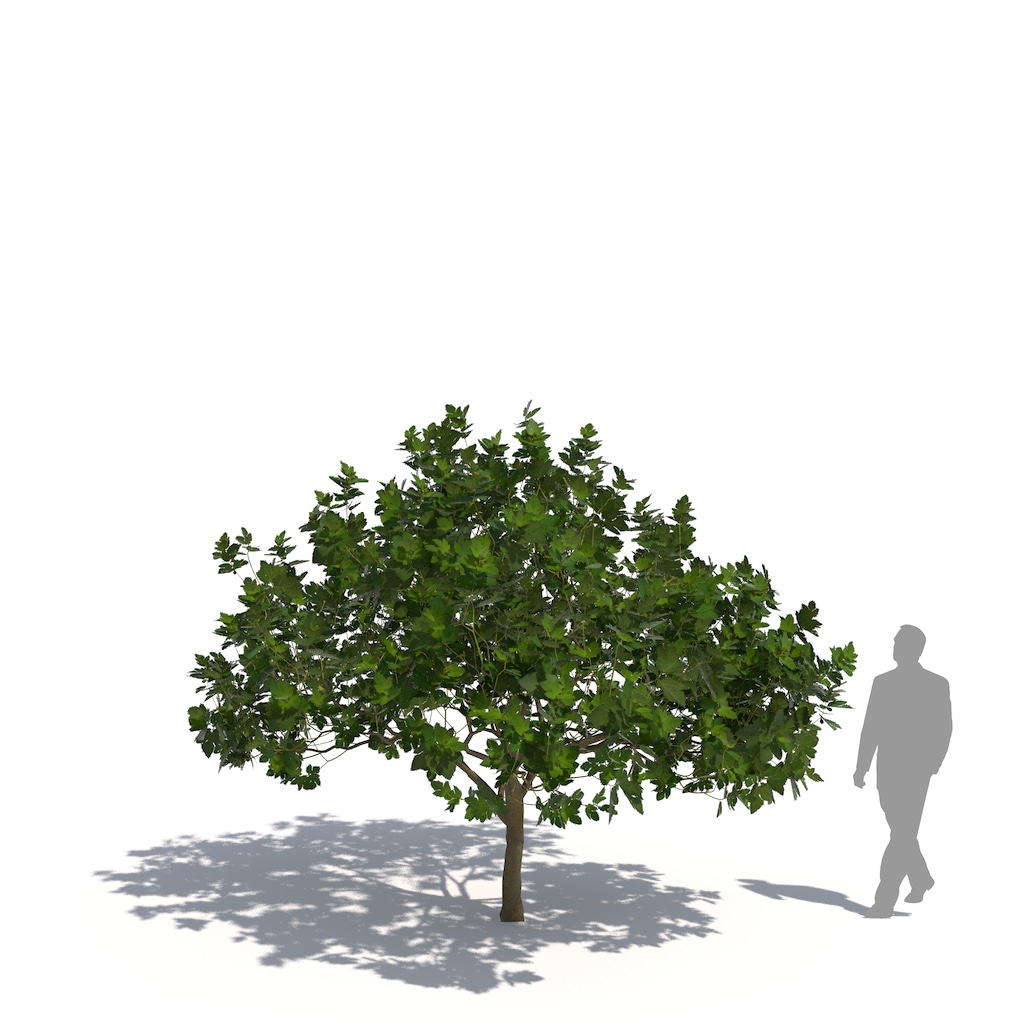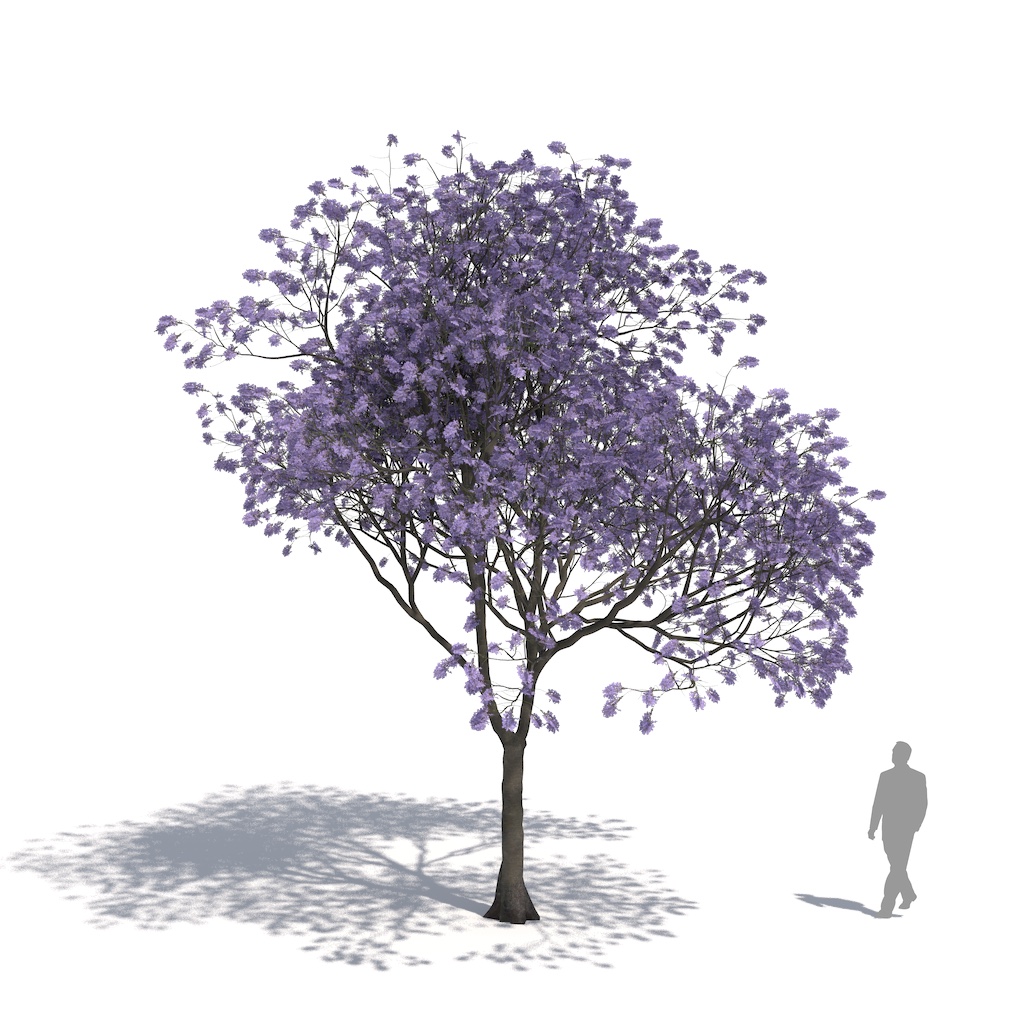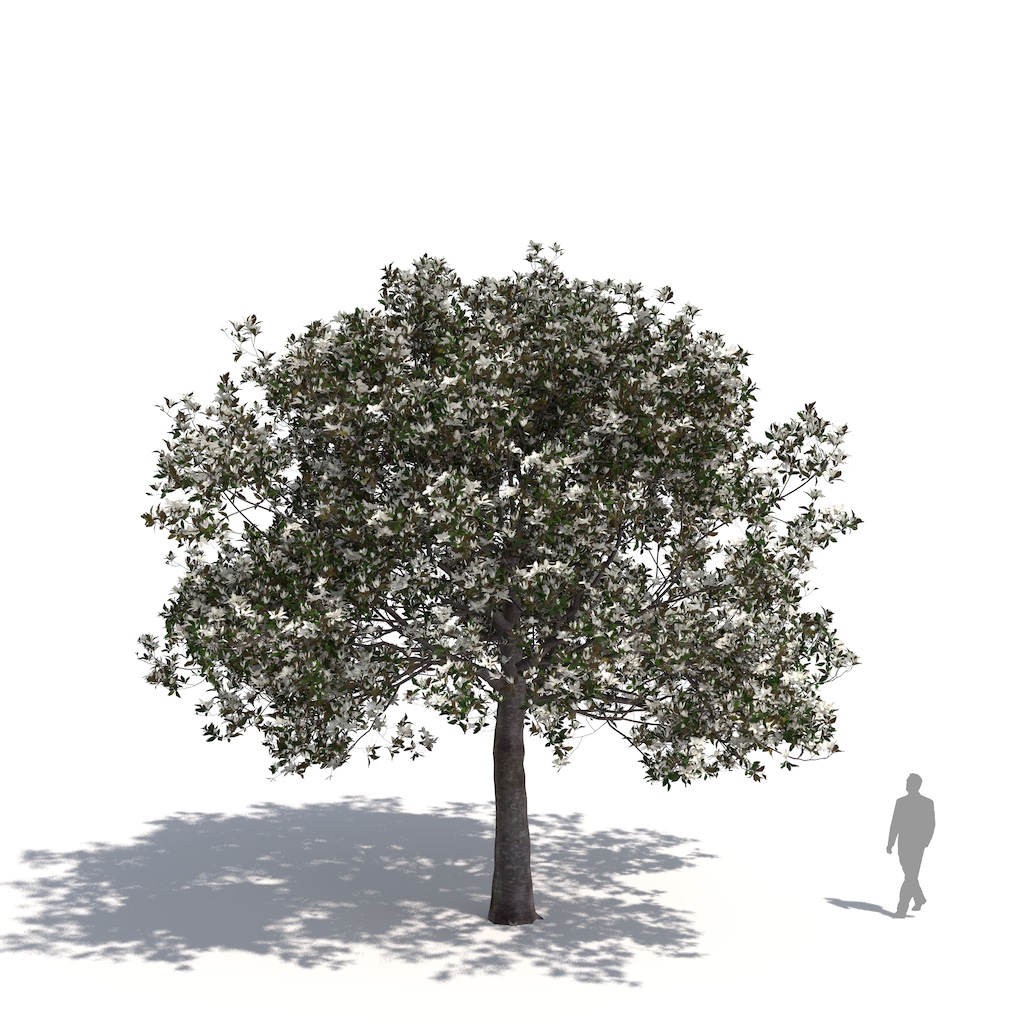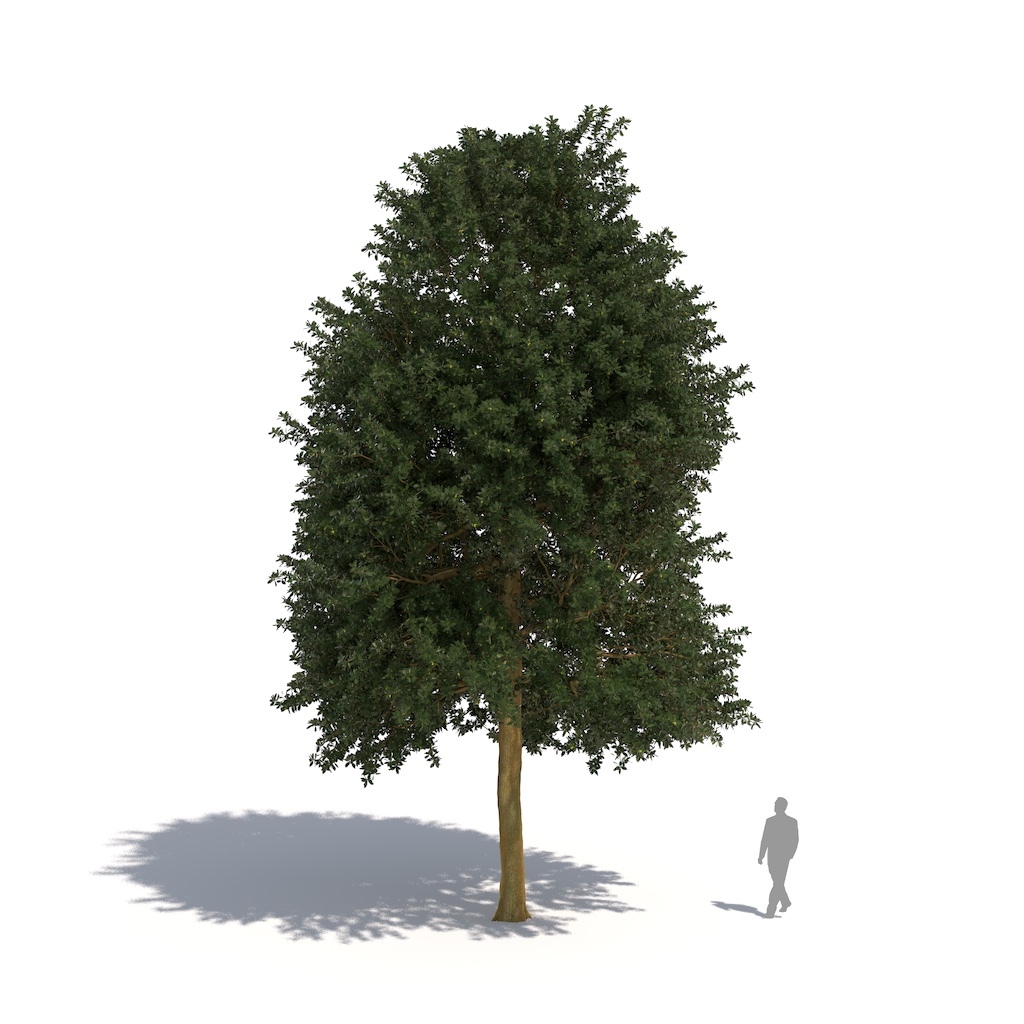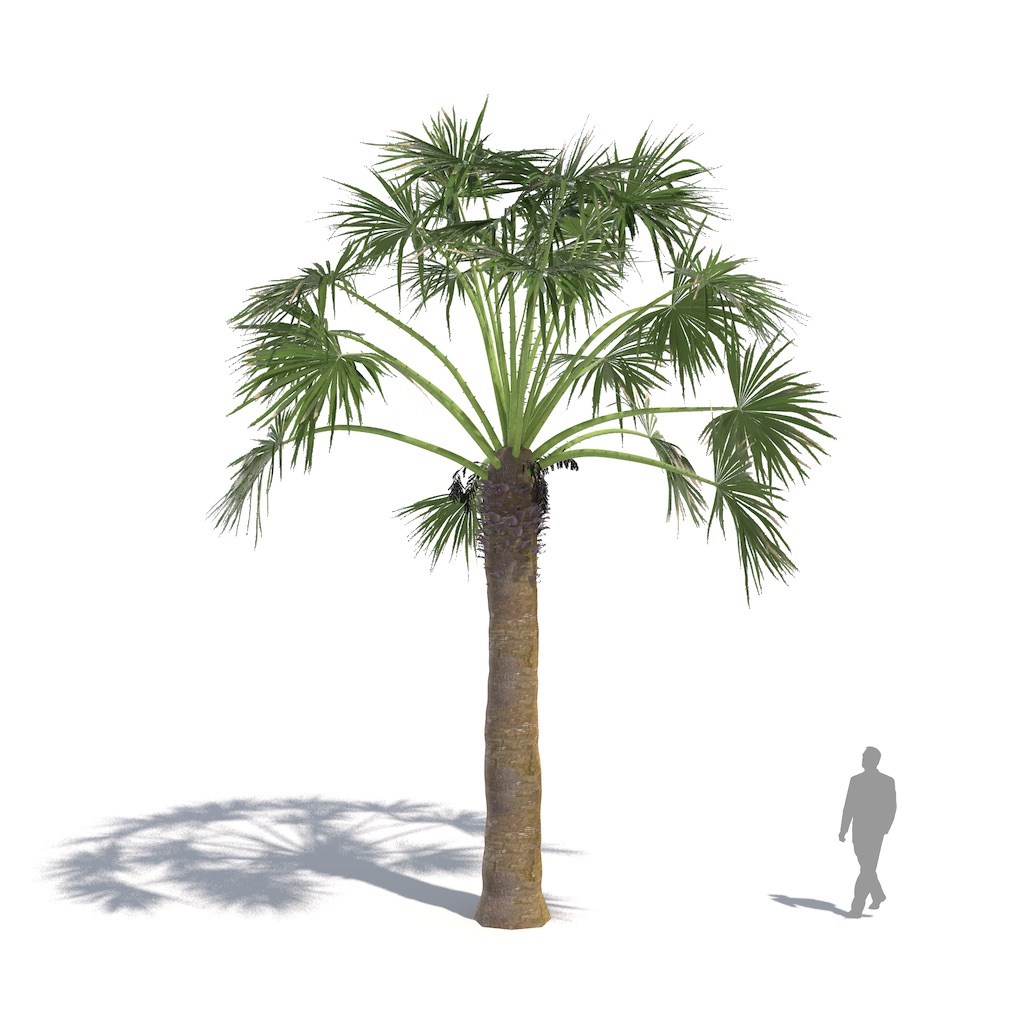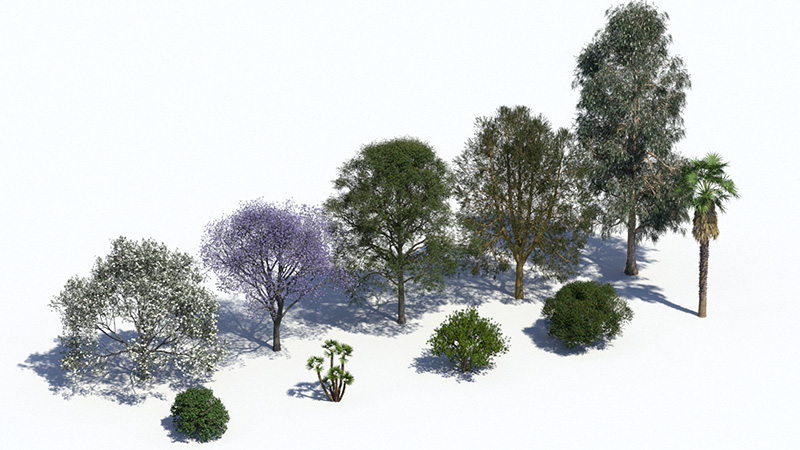Description
Mediterranean Shrub by Alberto Cibinetto, Baumatte, using Laubwerk Plants Kit 15, Cinema 4D, and V-Ray.
LAUBWERK PLANTS KIT 15 – SUBTROPICAL TREES AND PALMS
The following 10 tree species are included in the Plants Kit 15. Each species comes in 36 variations per species, i.e. 3 variants, 3 ages and 4 seasonal aspects, for a total of 360 models per Kit.
STRAWBERRY TREE
Arbutus unedo
Slow-growing, mostly multi-stemmed evergreen shrub, or small tree with spreading broad round crown. Bark initially reddish-brown, increasingly speckled with grey as it ages, peeling off regularly. Hard, mostly lancet-shaped leaves with serrated margins in shiny medium green. Bell-shaped white to pink flowers in autumn and winter. Spherical, slightly prickly orange to red fruits reminiscent of strawberries. The conspicuous ornamental fruit is suitable for consumption and is used to produce jam and liqueur.
EUROPEAN NETTLE TREE
Celtis australis
Picturesquely-growing medium to large deciduous tree, with spreading, slightly irregular, broad, round to umbrella-shaped crown. Smooth grey beech-like trunk and woolly greenish shoots. Alternately-arranged strongly dentate leaves, ovate to elliptical, with rough dark-green top and soft hairy grey-green underside. Flowers very small and rather inconspicuous. Spherical fruits initially reddish, later becoming purple- to violet-brown, with sweetish, edible pulp. Important fauna tree for bees, butterflies, and moths.
MEDITERRANEAN DWARF PALM
Chamaerops humilis
Small, slow-growing palm, mostly multi-stemmed, with bushy shape and compact, dense crown. Trunk covered with brown fibers, similar to the hemp palm. Rigid, fan-shaped, semicircular leaves with pointed, lanceolate, blue or grey-green plumage, and spiny leaf stalks. Large, bright-yellow flower spikes in spring. Globular to ovate, yellow- to later reddish-brown berries. Originally from the coastal regions of the western Mediterranean.
PINK SNOWBALL TREE
Dombeya x cayeuxii
Fast-growing, medium evergreen shrub or multi-stem tree with round crown. Smooth bark only slightly grooved. Large, dentate, alternate, petiolate medium-green leaves. From October to March, has round clusters of pink flowers, similar to Hydrangea flowers, which attract many bees and butterflies. Species is named after the horticulturist Henri Cayeux, who is said to have created it.
SOUTHERN BLUE GUM
Eucalyptus globulus
Medium-sized to large coniferous evergreen tree with a conic, typically very narrow columnar crown. The dark green foliage grows in dense sprays. The seed cones are ovoid or oblong, green at first, maturing brown about 2 years after pollination. The dark green “exclamation mark” tree shape is considered as characteristic signature of Mediterranean landscapes. Trees are very long-lived.
COMMON FIG
Ficus carica
Fast-growing deciduous shrub or small tree with a broad, wide-spreading, strongly-branched crown and a low canopy. Trunk mostly twisted, gnarled, or curved, with greyish-brown bark and clearly recognizable lenticels. Hand-shaped, medium-green leaves with three to five lobes and a rough upper surface, and softer, slightly pubescent underside. Has no visible showy flower, but a flower-bearing organ (syconium), which turns into a fig after pollination. Tasty large oblong or pear-shaped fruits, initially green, then yellow or brown-violet later. The plant can only be pollinated through the so-called fig wasp, which enters through a tiny opening into the syconium.
JACARANDA
Jacaranda mimosifolia
Medium-sized deciduous tree with bright, broad, round spreading crown. Thin greyish-brown bark. Double pinnate leaves consisting of many narrow elliptic light- to medium-green leaflets. Showy, beautiful, bell-shaped flowers, bright blue-violet, loosely connected in pyramidal panicles. Leathery wooden red-brown capsule fruit. Important ornamental wood in subtropical regions.
SOUTHERN MAGNOLIA
Magnolia grandiflora
Small to large, partly multi-stemmed evergreen tree with spreading, broad, conical crown. Hairy, tomentose bark on the young twigs; older branches and trunk have bald thin grey bark. Large leathery reverse-ovate or elliptic leaves with apex. Upper lobes are glossy dark-green and smooth, while the underside is red-brown and slightly pubescent. Large, cup-shaped white flowers are showy and fragrant. Large, slightly hairy brown compound fruit. A very important and characteristic ornamental shrub in the southern states of the USA.
HOLM OAK
Quercus ilex
Large, often multi-stemmed, slow-growing wintergreen deciduous tree with spherical crown and picturesque shape. Smooth dark-grey bark, increasingly furrowed in old age. Alternately arranged leathery ovate to lanceolate dentate leaves with glossy dark-green top, and felty, whitish to greyish underside. Yellow catkins from spring to early summer. Long-ovate or round light-green acorns. Characteristic tree of the Mediterranean climate zone, playing a major role in traditional pig fattening in the Iberian peninsula.
DESERT FAN PALM
Washingtonia filifera
Large, robust, fast-growing palm with a high canopy and a loose, open crown. Brown to reddish-brown and grey, barrel-shaped trunk, increasingly cracked in old age. Huge, hanging, fan-shaped leaves, from yellowish-green to silver to greenish-grey, with drooping white fibers. White to yellow blossom. Dark-brown to black fruits. Without maintenance, the dead brown leaves remain hanging on the palm trees, sometimes covering the entire trunk like a skirt, thus the alternate name “petticoat palm”.
INCLUDES 360 MODELS
All Laubwerk Plants in this Kit come in 36 variations per species, i.e. 3 variants, 3 ages and 4 seasons. Here are a few examples of the variety:
Spring: 10 out of 360 subtropical tree models of Laubwerk Plants Kit 15.
Winter: 10 out of 360 subtropical models of Laubwerk Plants Kit 15.
Detail of southern magnolia (Magnolia grandiflora) in spring
Detail of common fig (Ficus carica) in fall





